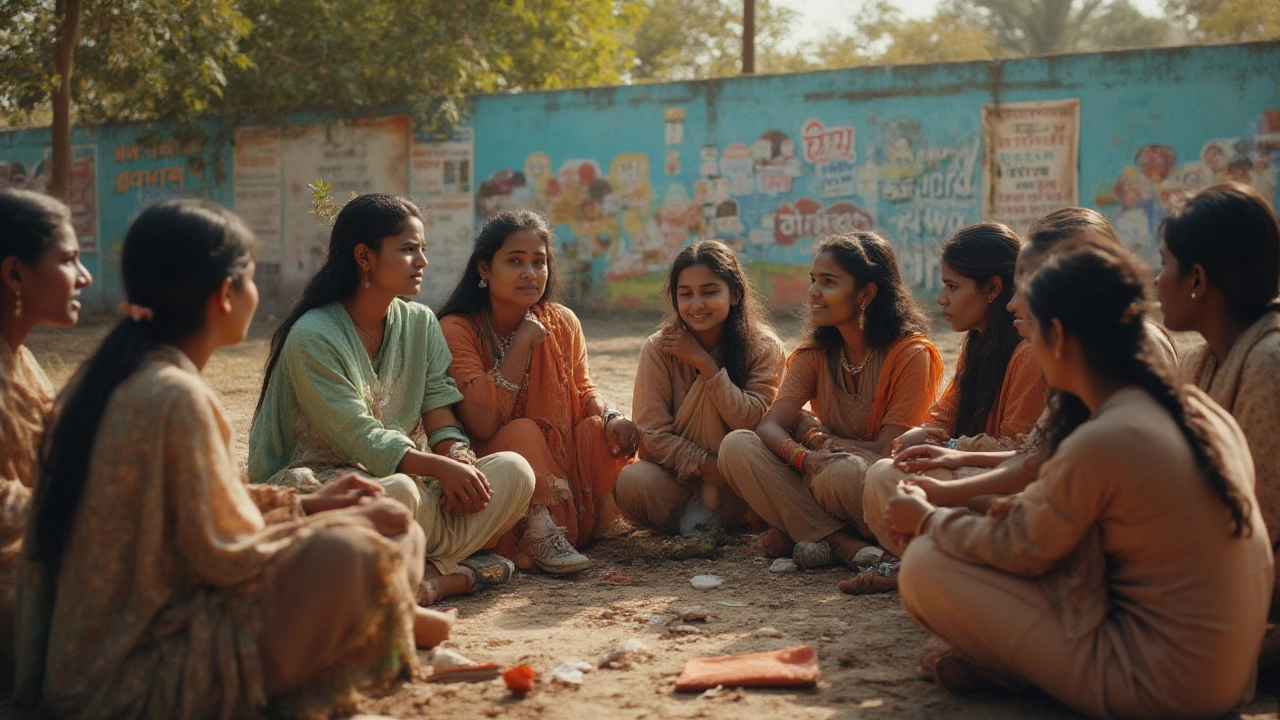People check out of conversations—even good ones. It’s usually not an attention span thing. When engagement drops, it’s often because something went missing. Almost like a recipe with a single forgotten spice, and suddenly the flavor just isn't right. In groups, teams, events, and even big movements, engagement has its own secret formula. And the 3 P’s of engagement—Participation, Purpose, and Passion—are those spices. Burn those into your brain, and you’ll notice the difference not just at work, but anywhere you rally people for a cause, a project, or even just dinner plans.
Breaking Down the 3 P’s: What Do They Actually Mean?
Let’s drop the fluff and dig deep, because a lot of folks oversimplify these words. First up, Participation. This isn’t just putting your name on a sign-up sheet. True participation means hands-on, minds-on, real people doing real things. In community organizing, think about the difference between someone who just shows up and someone who actually volunteers ideas, time, and energy. A 2023 Pew Research survey found that 48% of volunteers felt only "somewhat involved" in a typical project, and those were the people who just showed up but didn’t get pulled in. If you want true engagement, reach beyond attendance—get people actively contributing and making the project their own.
Participation shines when you lower the barriers. This sounds fancy but really just means making it easy and enjoyable for people to join in. Think snack breaks at events, clear instructions, or buddy systems for new folks. Successful charity events like Clean Up Australia Day or the US’s Big Event at Texas A&M thrive because everyone knows exactly where and how they can pitch in, no guesswork. People aren’t just there—they’re busy, they’re needed, and they know it.
Now, Purpose. There’s nothing more draining than being part of a group where nobody knows why they’re even there. Purpose answers the big “so what” question. Why are we doing this? Why does it matter? Great community programs don’t just assign tasks—they talk about the meaning behind every shovel of dirt, every late-night spreadsheet, every awkward phone call to sponsors. That’s how Feeding America, for example, recruits and keeps over 2 million volunteers: everyone who joins knows their work feeds families who need it. Purpose isn’t just a mission statement on a wall. It’s a story, a reason, a North Star that keeps people coming back even when the work gets hard.
And finally, Passion. Purpose gets you in the door, passion keeps you up working late. It’s the “I can’t not care” impulse in your gut. When United Way interviewed their most active volunteers in 2024, 67% said their personal connection—maybe their aunt had relied on food banks, maybe they’d experienced poverty—was why they went above and beyond. Passion can be contagious: think of when someone is so fired up about their cause, you can’t help but feel something, too. Smart leaders spot those embers in newcomers and fan them into flames. Sometimes you do it through sharing powerful stories. Other times, you pair people with roles that fit their skills and values—maybe a techie runs your website instead of making sandwiches. When a person contributes from their strongest place, passion follows naturally.
So the 3 P’s sound simple, but layering them all together? That takes intention. If you ever wonder why a certain project or group is flatlining, check: is anyone actually participating? Do they grasp the deeper purpose? Do they feel fired up inside? Usually, one or more is missing.

How the 3 P’s Play Out in Real Community Engagement
None of this is just theory—it’s got real impact. Picture a community cleanup event. First year, you have 30 volunteers, and participation is so-so. People stand around unsure, following whoever seems in charge. There are a lot of silent moments. Compare that to what happens when organizers call everyone together at the start, explain the exact difference today’s work will make, and share stories of past successes—and then give everyone a specific role. Suddenly the group feels purposeful. People start collaborating. A few stay late, sorting recycling bags or even sharing ideas for next time. This isn’t luck. It’s the 3 P’s at work.
You can see similar magic in youth leadership programs. When teens are given the freedom to design projects based on their interests (passion) and understand the wider goals (purpose), they're more likely to stick with it and show up consistently (participation). The National 4-H Council, for example, saw a 30% rise in program retention after letting participants propose new club ideas rather than just following a set agenda. When you combine choice with connection to a bigger vision, you turn obligation into devotion.
How do you foster participation when people are overwhelmed or unsure? Start by making it bite-sized—offer micro-volunteering roles, ten-minute tasks, or one-off event helpers. Sometimes, folks want to help but can’t commit long-term. Tech-savvy organizations let people sign up for shifts online or join remote meetings, expanding participation beyond just those who can show up in person. Try celebrating every level of involvement, too. Highlight quick wins in group chats, pin good news to the top of your Slack or bulletin board. Ask yourself: “Could someone with five free minutes join in and feel useful?” If not, break down bigger jobs into smaller, friendlier pieces.
Purpose often gets overlooked when things get busy. Keep it alive by sharing impact updates—photos, stats, stories—regularly with your team. For instance, after a clothing drive, snap a team photo with the packed boxes and include a quote from a local shelter about what those donations mean. See who lights up. Those are your Passion people. Invite them to share their own reasons for supporting your cause, maybe even as quick testimonials at meetings. Giving space for people to voice "why this matters to me" builds a sense of belonging that no anonymous thank-you card can match.
Here’s a quick look at how the 3 P’s shape different types of engagement, backed by a little real data:
| Engagement Type | Participation | Purpose | Passion |
|---|---|---|---|
| Traditional Charity Event | Signup-driven, some drop-offs | Stated goal, but often vague | Boosted by emcee stories |
| Youth Leadership Program | Hands-on, creative roles | Personal goal setting | Project-based connection |
| Online Fundraiser | Clicks, shares, peer asks | Urgent stories, real-time progress | Viral, via personal connection |
| Neighborhood Cleanup | Task teams, group photos | Before/after accountability | Love of place, local pride |
If you’re running something and want to diagnose engagement trouble, ask yourself (or better yet, your team) three quick questions: Are people actually involved, or just present? Do they know why it matters? Is anyone getting so excited they can’t help but recruit someone else? If you get a “no” on any one, tweak the environment or your approach.

Tips, Pitfalls, and New Ideas: Making the 3 P’s Work for You
Ready to put this into practice? Here’s what I’ve learned from six years running youth programs and wrangling volunteers: the 3 P’s don’t just "happen"—they take thoughtful setups, a bit of trial and error, and constant adjustment. For Participation, make sure every meeting or event has interactive moments, not just lectures. Like, kick off a session with a quick poll, a group challenge, or a personal intro round. Physical activity matters too. Set up stations, rotate tasks, or use icebreakers. Nobody wants to feel stuck or invisible.
Purpose sometimes gets lost in the paperwork. Infuse that sense of meaning by telling origin stories—why was this group founded? What problems did early members face and solve? Link today’s actions to yesterday’s wins and tomorrow’s dreams. If you’re leading, ask participants to help create goals and decide how to measure success. A 2024 study from Stanford’s Social Impact Lab found that engagement and volunteer retention rose up to 21% in groups that regularly reviewed progress on shared goals.
Passion is your wild card. Some people walk in fired up, others need a spark. Find out what your people care about by having one-on-ones, simple surveys, or casual conversation. Don’t be afraid to let personality come through—even silly contests or themed days help. If your community is online, encourage user-generated posts, memes, or story swaps. Assign roles based on interests; not everyone loves public speaking, but someone might crush at designing flyers or coming up with hashtags.
Let’s talk about some classic mistakes, too. It’s easy to assume that everyone knows what’s up—never skip the "why." Another pitfall: loading all the fun or high-meaning jobs onto one or two reliable people, burning them out before new folks even get a chance. Rotate roles and encourage skill-swapping. Celebrate tiny steps loudly—public praise in chat groups, thank-you notes, even a silly trophy or meme for "Most Creative Snack" brings shy people out of their shell.
Here are some extra hacks for making the 3 P’s sticky in your group:
- Design easy entry points: simple intro tasks, trial periods, or "bring a friend" days.
- Craft shareable stories and impact visuals—social media-ready, so the why spreads without boring anyone.
- Make progress visible—update a thermometer chart, post outcomes, keep everyone in the loop.
- Foster a safe space for ideas, even if they flop. Innovation triggers investment.
- Encourage feedback—quick polls on what worked, what didn’t, what people loved.
- Mix ages, skills, and backgrounds. Engagement deepens when people learn from each other.
- Host an annual (or monthly) “vision refresh” session to let everyone weigh in on future cool projects. The buy-in is unbeatable.
If you want your community to spark and last, get those 3 P’s right from the start and revisit them often. Engagement’s not just about filling seats—it’s about firing up hearts and minds, then giving folks something meaningful—and fun—to do with that flame.






